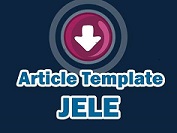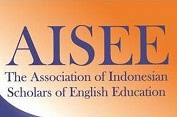An Analysis of Receptive and Productive Vocabulary Knowledge of Informatics Engineering Students at a Private University
DOI:
https://doi.org/10.36706/jele.v11i1.22Keywords:
productive vocabulary, receptive vocabulary, vocabulary knowledge, vocabulary size test, informatics engineeringAbstract
Several universities in Indonesia require the use of English in some aspects of the learning process for non-English majors, especially for Informatics Engineering students. The students are required to analyse enormous amounts of English for specific or academic purposes (ESP/EAP) text throughout their learning process. Extensive vocabulary knowledge plays a very important role here, considering that they are presented with assignments in more specific contexts. The vocabulary knowledge can help students navigate the overlaps with common vocabulary but carry different contextual meanings in their field. Therefore, this research involved Informatics Engineering students at a private university with two classes, regular and non-regular, to analyse the students’ receptive and productive vocabulary sizes and to know what factors affect the sizes within a cross-sectional survey research. The data were collected by conducting a Receptive Vocabulary Size Test (RVST), a Productive Vocabulary Size Test (PVST) within the Academic and University Word List, and a set of questionnaires. The results reveal the level of the students' vocabulary sizes and the factors that affect the sizes. The implication of the research results concerning the Informatics Engineering students’ receptive and productive vocabulary sizes is discussed in this research.
References
Assyifa, N. N., Raniti., Noviytanti, A., & Khomarudin. (2023). The extra class activity in improving student’s vocabulary. Linguamedia Journal, 4(2).
Citrayasa, V., & Nernere, M. S. (2020). Assessing the vocabulary size of the international class students. English Language Teaching and English Linguistics, 5(2), 1-11.
Coxhead, A., & Nation, P. (2001). The specialised vocabulary of English for academic purposes. Research Perspectives on English for Academic Purposes, 252-267.
Coxhead, A. (2018). Vocabulary and English for specific purposes research: Quantitative and qualitative perspectives. London, England: Routledge.
Creswell, J. (2003). Research design: Qualitative, quantitative and mixed methods approaches 2nd Edition. Thousand Oaks, CA: SAGE Publications.
Creswell, J. W. (2012). Educational research. Boston: Pearson Education.
Hiebert, E. H., & Kamil, M. L. (2005). Teaching and learning vocabulary: Bringing research to practice. Routledge.
Laufer, B., & Nation, P. (1999). A vocabulary-size test of controlled productive ability. Language Testing, 16(1), 33-51.
Laufer, B. (2000). Task effect on instructed vocabulary learning: The hypothesis of ‘involvement’. Selected Papers from AILA ’99 Tokyo, 47-62.
Lee, S. (2020). Examining the roles of aptitude, motivation, strategy use, language processing experience, and gender in the development of the breadth and depth of EFL learners’ vocabulary knowledge. SAGE Open, 10(4), 2158244020977883.
Leedy, P. & Ormrod, J. (2001). Practical research: Planning and design 7th Edition. Thousand Oaks: SAGE Publications.
Nation, P. (1990). Teaching and Learning Vocabulary. New York: Newbury House.
Nation, I. S. P., & Beglar, D. (2007). A vocabulary size test. The Language Teacher, 31(7), 9–13.
Putra, Y. (2009). The relationship between vocabulary size and writing ability of the English language laboratory students at Universitas Pelita Harapan (Undergraduate’s Thesis). Universitas Pelita Harapan.
Rahman, M. S. (2017). The advantages and disadvantages of using qualitative and quantitative approaches and methods in language “testing and assessment” research: A literature review. Journal of Education and Learning, 6(1), 102-112. http://dx.doi.org/10.5539/jel.v6n1p102.
Saville‐Troike, M. (1984). What matters in second language learning for academic achievement?. TESOL Quarterly, 18(2), 199-219.
Siregar, S. (2014). Metode penelitian kuantitatif dilengkapi dengan perbandingan perhitungan manual & SPSS 2nd Edition. Jakarta: Kencana.
Siregar, F. L. (2020). English students’ vocabulary size and level at a private university in West Java, Indonesia. Humaniora, 11(2), 77-83. https://doi.org/10.21512/humaniora.v11i2.6388.
Stratton, S. J. (2021). Population research: Convenience sampling strategies. Prehospital and Disaster Medicine, 36(4), 373-374.
Wiersma, W. (1995). Research methods in education: An Introduction 6th Edition. Massachusetts: A Simon and Schuster Company.
Wero, Y. T., Machmud, K., & Husain, N. (2021). The Study on Students' Vocabulary Size. Jambura Journal of English Teaching and Literature, 2(1), 22-34.
Xue, G., & Nation, I. S. (1984). A university word list. Language Learning and Communication, 3(2), 215-229.
Yusuf, D. (2018). The Impact of Time on English Language Learners’ Vocabulary Size (Postgraduate’s Thesis). St. Cloud State University.
Zhou, S. (2010). Comparing receptive and productive academic vocabulary knowledge of Chinese EFL learners. Asian Social Science, 60(10), 14-19.
Downloads
Published
Issue
Section
License
Copyright (c) 2024 The Journal of English Literacy Education: The Teaching and Learning of English as A Foreign Language

This work is licensed under a Creative Commons Attribution-ShareAlike 4.0 International License.













